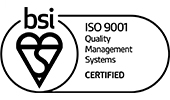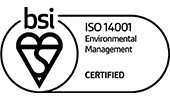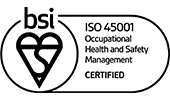“In a rapidly evolving world, the workplace is no exception to the winds of change. Traditional 9-to-5 office routines have given way to flexible approaches like hybrid working.” Says Kevin Mashford, Paramount’s Sales Director.
With the onset of the Covid-19 pandemic, remote work became a necessity for many, forcing businesses to adapt quickly.
Now, in our post-pandemic world, hybrid working has emerged as a long-term solution that balances the best of both worlds.
In this blog, we delve into the concept of hybrid working, exploring insights from a global research study conducted by leading furniture manufacturer Steelcase, renowned for its innovative workspace solutions, and who Paramount has partnered with for several years.
In the Summer, Paramount welcomed industry colleagues to an event hosted at Dock House in Bristol, based on the realities of hybrid working life, led by Kevin and Steelcase’s Kris Newman. Here’s what we learned.
The rise of hybrid working
“Hybrid working combines the benefits of remote work with the advantages of working in a physical office. Employees have the flexibility to choose when and where they work, striking a balance between remote and in-office days”, says Kris.
Kris explained how the model gained traction during the pandemic, but it looks as though it’s here to stay as it offers numerous advantages for both employees and employers.
Steelcase research: A glimpse into the hybrid work landscape

Steelcase conducted a survey that provides valuable insights into the dynamics of hybrid working. The survey, conducted among employees and business leaders across various industries, highlights the following key findings:
- Employee Preferences
One of the most significant revelations of the survey is that employees have come to appreciate the flexibility that hybrid working offers. A majority of respondents expressed a desire to continue working remotely for at least part of their workweek. This preference underlines the importance of offering a choice in where and how employees work.
- Productivity and Well-being
Contrary to some initial concerns about remote work leading to a drop in productivity, the survey found that a significant number of employees reported higher productivity levels when working from home. Reduced commuting time, a comfortable home environment, and fewer distractions played a role in boosting efficiency. Additionally, employees reported better work-life balance and reduced stress levels.
- Collaboration challenges
While remote work has its merits, the survey also highlighted some challenges. Employees pointed out that collaboration and spontaneous interactions with colleagues suffered when working remotely. Maintaining a sense of connection and belonging to the organisation became crucial issues to address in the hybrid model.
- The role of the office
The survey emphasised the evolving role of the physical office space. Instead of being a place where employees must come daily, it is becoming a hub for collaboration, innovation, and social interactions. The office’s purpose is shifting from a location for individual tasks to a destination for collective work and connection.
Navigating the hybrid working landscape
As organisations embrace hybrid working, it’s essential to create a flexible and inclusive environment that accommodates the diverse needs and preferences of employees. Here are some strategies based on Steelcase’s survey findings:
- Embrace flexibility
Recognise that one size does not fit all. Allow employees to choose the work arrangement that suits them best, whether that’s fully remote, fully in-office, or a hybrid approach. Flexibility fosters employee satisfaction and engagement.
- Invest in technology
To bridge the gap between remote and in-office employees, invest in technology that supports seamless communication and collaboration. Video conferencing, project management tools, and virtual whiteboards are just a few examples.
- Reimagine office spaces
Rethink the design of physical workspaces. Create flexible layouts that cater to collaboration, innovation, and individual tasks. Consider adaptable furniture, meeting rooms equipped for hybrid meetings, and comfortable spaces for focused work.
- Foster a hybrid culture
Nurture a company culture that values both remote and in-office employees. Encourage team building activities and virtual events that bring everyone together, regardless of their physical location.
- Provide training and support
Equip employees with the skills they need to thrive in a hybrid work environment. Offer training on time-management, virtual collaboration tools, and remote work best practices.
A few words in summary
“Our world of work is undergoing a transformation, and the hybrid working model is at the forefront of this change.
The insights from Steelcase’s survey reveal that employees value the flexibility and well-being benefits of this approach. It also highlights the importance of addressing collaboration challenges and reimagining the role of the office,” says Kevin.
“As organisations navigate the hybrid working landscape, they must prioritise flexibility, invest in technology, create adaptable workspaces, foster a hybrid culture, and provide the necessary training and support for their teams,” says Kris.
“By doing so, they can harness the best of both remote and in-office work, ensuring a future of work that is not only productive but also fulfilling for their employees.”
In conclusion, in this dynamic and evolving landscape, the workplace of tomorrow is taking shape today. And it’s an exciting journey to be a part of.
With thanks to Kevin and Kris.


For more information, please visit www.steelcase.com








